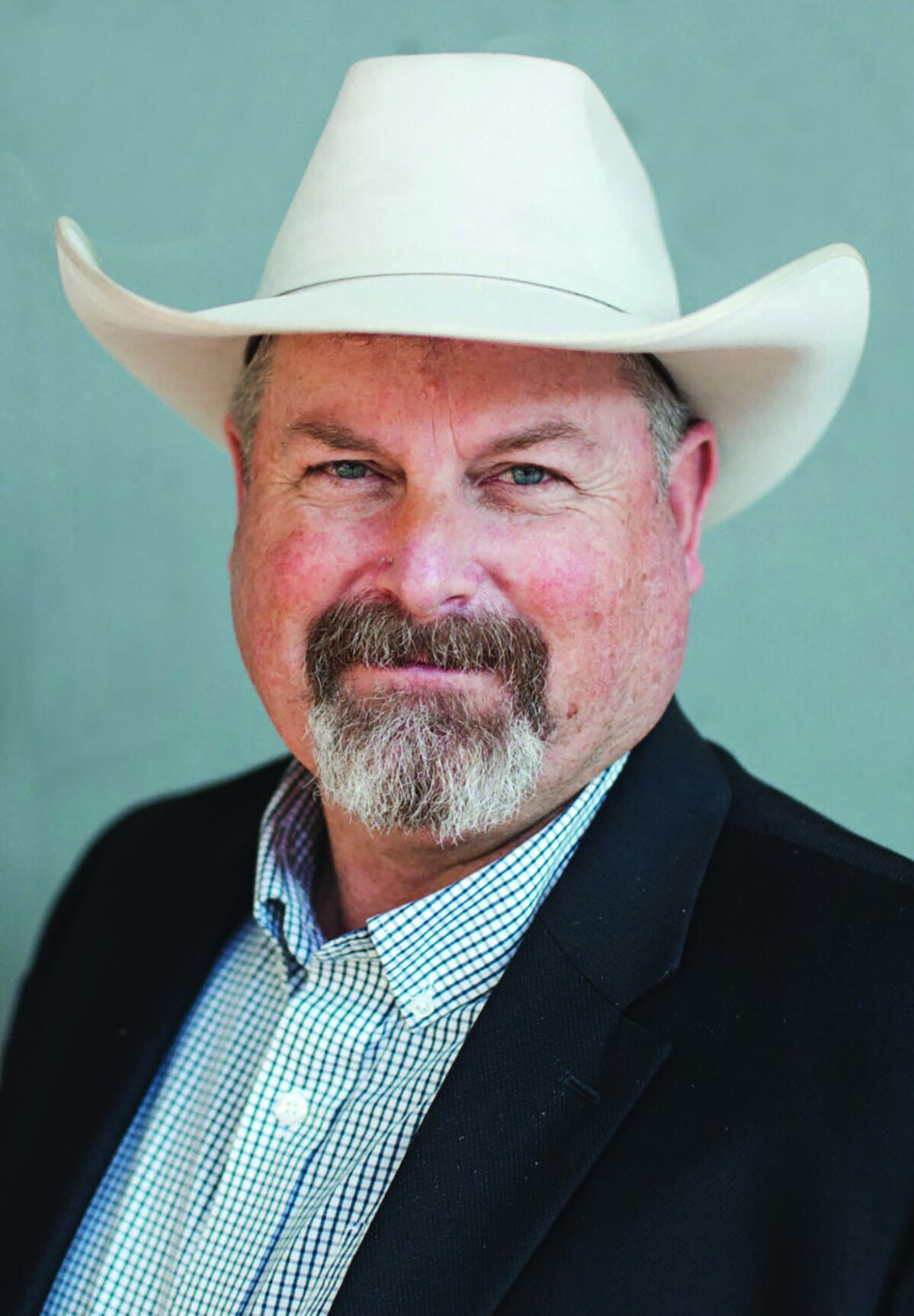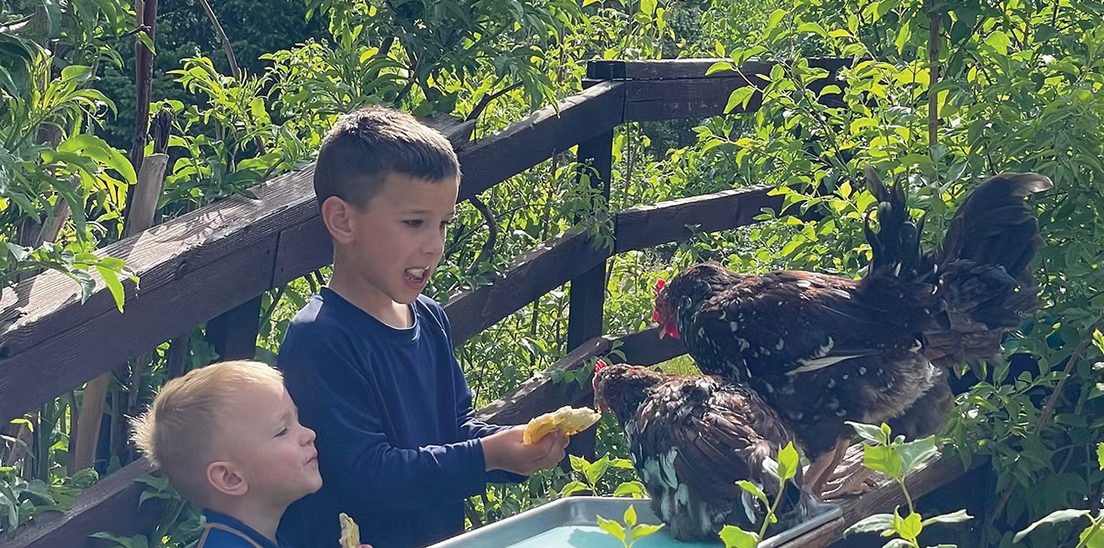A touch of Scotland in Baker County: Dan and Eva Henes raise Scottish Highland cattle on their Old Souls Farm
Published 9:00 am Saturday, May 11, 2024

- Scottish Highland cattle shed much of their shaggy hair during the spring, but the long hair that distinguishes the breed remains year-round on their faces and ears.
Sigmund “Siggie” Henes just turned 2, he’s wearing tan Carhartt overalls that surpass normal standards of cuteness and ought to land him on the cover of the company’s catalog, but at the moment he’s fixated on convincing a 5-day-old calf to eat.
Trending
Siggie has grabbed a double handful of aromatic grass hay.
He toddles around the pen, engaging in a sort of rhythmic dance with the reddish-brown heifer calf whose diet is still limited to milk.
Siggie neither knows this, nor cares.
Trending
After a few minutes, though, and multiple rejections, he settles for petting the calf, which is just about as tall as Siggie.
His brother, Chatam, 3½, also scampers around the pen while Hans, who will celebrate his first birthday on April 24, watches from his mom’s arms.
The calf, even in the dim light inside the barn at Old Souls Farm, between Salmon and Marble creeks near the western edge of Baker Valley, clearly isn’t a Hereford or an Angus, the commonest breeds in a county where cattle reign.
This calf is quite a lot fuzzier than those comparatively slick breeds.
And she will get fuzzier still as she grows.
Siggie’s parents, Dan and Eva Henes, manage a herd of Scottish Highland cattle on their 350-acre farm beneath the soaring sedimentary wall of Elkhorn Ridge. Their pastures, just beginning to green on this chilly morning in early April, are 5,300 feet below the triangular tip of Elkhorn Peak, its precipices still almost wholly white.
Dan, 38, who grew up just a mile or so to the west, on 20 acres along Mill Creek, said Scottish Highland is the oldest registered cattle breed in the world.
(The first herd book for the breed dates to 1884, according to Oklahoma State University.)
The couple maintain about 55 breeding cows as well as three or four breeding bulls.
They sell bulls and cows to help others build their herds.
Old Souls Farm also sells beef through its website — oldsoulshighlands.com/.
Customers can buy whole, half or quarter animals, with processing done by Hines Meat Company of La Grande, or packaged beef from a USDA-certified plant, Hoagland Meat of Homedale, Idaho.
Customer demand for Scottish Highland beef has “exploded” over the past few years, said Eva, 35, who grew up in Southeast Alaska.
Dan said he was preparing a package of beef to mail to a customer in San Diego.
Among the unique attributes of the breed, Dan said, is that because they have longer, thicker hair, they don’t need a layer of insulating fat to protect them from frigid weather.
Instead, he said, the fat marbles the meat, creating a “delicious” flavor.
The meat also has fat and cholesterol amounts similar to chicken.
“It’s just how they’re built,” he said.
The Heneses’ cattle are exclusively grass-fed. They graze either on Old Souls Farm or other pastures nearby in Baker Valley.
The couple said they have conducted blind taste tests with friends and neighbors, and the testers invariably favor the Scottish Highland beef.
Building a herd
It all started with three animals.
A bull, a cow and a calf.
All Scottish Highland.
The year was 2016 and Dan and Eva were newlyweds.
(The couple met in Eugene, introduced by family friends, when Eva was attending the University of Oregon and Dan was studying at Oregon State University.)
They had intended to start a cattle herd but hadn’t chosen a breed.
The couple had heard of Scottish Highland cattle but knew little about them.
When a family who was moving from a farm near Haines offered to sell the three animals, Dan and Eva were intrigued.
“We thought they would do well in Baker,” Eva said, noting the breed’s famed tolerance for the sorts of temperatures typical in Baker Valley.
Eight years later, with a herd built through breeding on their farm and from buying animals, the couple is satisfied with the extent of their operation.
“We could double the herd size — we have the capacity — but we’re not in a hurry to grow,” Dan said.
The Heneses also have a commercial herd of about 80 cows, mostly Angus, some of which serve as surrogates for the Scottish Highland herd.
Dan said they work with a reproductive specialist who extracts eggs from Scottish Highland cows, then fertilizes them with semen from Scottish Highland bulls. The embryos are grown for seven days, then implanted in an Angus heifer.
(The couple also sells Scottish Highland embryos, as well as semen, through their website.)
Those surrogate-born calves supplement the calves that Scottish Highland heifers, bred by the farm’s bulls (they don’t use artificial insemination), produce each spring.
Calves are born in April and May, late enough to avoid the worst of wintry weather.
Ear tags with names, not numbers
Dan drives a mud-streaked side-by-side through a gate and into a pasture where a few dozen cattle, including many pregnant cows, mill around, munching hay.
Winter feeding will end soon, he said, as the April sunshine warms the soil.
The farm’s pastures grow a mixture of grass and bird’s foot trefoil, a legume that has multiple benefits to Old Souls Farm, Dan said.
The plant, which produces yellow, pea-shaped flowers, adds variety to the cattle’s diet, enhancing the flavor of their meat, he said.
Moreover, the plant, like many legumes, pulls nitrogen from the air and adds it to the soil, where it works as free fertilizer.
The Heneses raise grass hay, and Dan said he’d like to plant alfalfa as well. On this April morning the pipes and fittings for a center-pivot irrigation system lie in a field beside Pocahontas Road, waiting to be installed.
Scottish Highland cattle require less feed overall than typical cattle breeds, Dan said.
The animals that stroll about the pasture are conspicuous not only because of their shaggy coats.
They also have horns, some well over a foot long.
Dan said they don’t dehorn their herd, in part because the animals are relatively docile.
“They’re super mellow cows,” he said.
Each animal has an ear tag that includes not a number but a name.
(Tags also have the farm’s name and phone number.)
Not that Dan, after spending so many hours tending the herd, needs to consult the tags.
“I can look at any of these animals and recognize them,” he said. “Anyone with a herd of 50 or 60 knows their cows.”
Dan said he and Eva, with help of course from their three sons, name every calf born on the farm, as well as animals they buy (except for those that already have a name).
Dan points to individual animals, naming them even though their shaggy coat obscures the tag.
“Watch out, Helma,” he says as he steers the side-by-side past a red-brown cow.
He points to another.
“That’s Dan — we named her after me,” he says with a chuckle as he gestures toward a heifer whose official name is actually Danielle.
(You can find a full roster of names on the Old Souls Farm website.)
Most of the heifers are pregnant.
“One of these might calve today,” Dan said. “They’re due around April 11.”
Scottish Highland heifers remain productive longer than some other breeds, he said, pointing to a 16-year-old that is pregnant. Another heifer is 22 years old.
The four bulls also have names, including one named for Ben Nevis, the tallest mountain in Scotland at 4,413 feet.
The shaggy coat that distinguishes Scottish Highland cattle is seasonal.
Dan said the animals will rapidly shed much of the hair as the weather warms, the exception being their faces and around their ears.
“As they age they get better and better at shedding,” he said. “Some look almost like pigs, just bare skin.”
Despite losing their protective winter coat, he said Scottish Highland cattle, with their origin in a maritime climate that lacks the torrid temperatures typical of summer in Baker County, need shade.
They prefer to stand in water when possible during hot weather, Dan said.
Raising a family
The two older Henes boys, Chatam and Siggie, serenade the pasture with yells of “bye cows” as their dad drives the side-by-side back through the gate and onto a gravel road.
Back at the barn, the pair clambers out of the vehicle and are drawn, as though by magnetic attraction, to a mud puddle about the size of a wading pool.
They commence to splash, heedless of the state of their clothing as only small boys can be.
Eva carries Hans. Being less mobile, he is also the least soiled of the brothers. She and Dan smile as parents do who have watched similar scenes play out many times.
As the couple ponders all that has happened over the past eight years — three children, dozens of shaggy cattle, a farm — their smiles remain.
“I couldn’t have dreamt that this would all come true,” Eva said. “We feel like we’re living the dream.”
She pauses briefly.
“Most days.”
Dan said he had always hoped to have a farm near where he grew up.
“But I never really pictured having this kind of operation,” he said. “That kind of just happened.”
Old Souls Farm, which includes two Jersey milk cows and a growing herd of goats raised for meat, as well as the Scottish Highland cattle, is “more than a full-time job,” Dan said.
Even so, both Dan and Eva pursue other professions in addition to running the farm.
He builds fences, primarily barbed-wire fences on rangelands.
Eva, who worked for the Baker City/County Planning Department from 2014-21, has a consulting business in which she helps clients with property rezoning and development.
“When everybody’s asleep,” she said with a laugh.
Nor is Old Souls Farm the couple’s only agriculture business.
They also operate The Succulent Hub, selling a variety of houseplants, cacti and other species from the greenhouse on their farm — thesucculenthub.com/.
The Heneses received the Excellence in Agriculture award at the 2024 Baker County Chamber of Commerce awards banquet in January.
As hectic as their days can be, with boys and bulls, goats and cows, fences and sprinkler pipes and much else besides to keep track of, the couple said they can’t imagine raising their family in any other setting.
“It is exciting to see their interests develop,” Eva said, gesturing to her sons as they chatter about the cows milling around the pasture. “We just haul them along with us.”
Dan said Siggie and Chatam frequently cajole their parents — but not for candy or some other treat.
The Henes brothers just want to “move cows,” Dan said with a laugh.
“You like to move cows, Siggie?” Eva asks.
The boy wearing coveralls doesn’t hesitate. And the exclamation point in his answer is palpable.
“Yes.”
The name Old Souls Farm has a simple origin, Dan and Eva Henes said.
Although the couple considered other names, including one that incorporated a nearby stream, Salmon Creek, they settled on Old Souls Farm because, Eva said, friends had referred to both she and Dan as “old souls.”
“I couldn’t have dreamt that this would all come true.
We feel like we’re living the dream.”
— Eva Henes, who with her husband, Dan,
owns Old Souls Farm near Baker City









